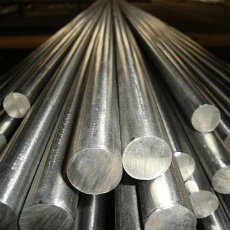
SANTIAGO (Scrap Register): One of the main challenges of the steel industry is to combat unfair trade, such as dumping and subsidies. The combination of overcapacity, slower economic activity and lower prices have resulted in an increasingly conflictive steel trade.
Proof of them is the large number of unfair trade investigations which have proliferated in recent years, making the steel industry one of the main users of the World Trade Organization tool’s (WTO).
Worldwide, in the last six years there are 242 investigations of dumping and subsidies in steel products, highlighting that China is the target with the largest number of investigations (110).
Latin America also maintains an active defense of its market, as evidenced by 59 investigations solved by the government, of which 39 were against China. In addition, there are 14 investigations in process and 12 of these are against Chinese steel products.
With this numbers it would seems that the problem has been faced and contained, however signs begin to appear that countries and companies that have been sanctioned with anti-dumping and subsidies duties are looking for other alternatives to continue exporting their products in conditions of unfair trade.
What these countries and companies have done is export products from the steel industry value chain. Products that are no located in Chapter 72 or 73 of the Harmonized Tariff Schedule. Such is the case of an investigation conducted and solved by the Government of Canada in the first months of this year on Fabricated Industrial Steel Components that are imported under the tariffed section 9406.00 and originated in China, Spain and South Korea.
These products, are assembled, partially assembled or in modular form, are used in structures for oil and gas extraction, minning activity, petrochemical plants, cement, fertilizers and other industrial installations.
The main input for these structures is steel plate (tariff item 7208.51); which is already sanctioned in Canada with anti-dumping duties for countries such as China, Bulgaria, Czechoslovakia, Romania, Ukraine, Denmark, Indonesia, Italy, Japan and South Korea.
The Government of Canada conducted these investigations over the last 10 years and the anti-dumping quotas identified varied from one single-digit figure to 60% and 74% levels.
Against this backdrop, when China and South Korea seen their exports of steel plate canceled they decided to export Fabricated Industrial Steel Components and in this way avoid the application of the anti-dumping duties to the steel plate products.
In this investigation, the Government of Canada identified anti-dumping duties of 41.0% for China, 3.1% for South Korea and 42.4% for Spain. In the subsidies against China, the penalty rates for Chinese companies range from 0.8% to 4.6%.
This research by the government of Canada opens a new aspect of unfair trade, where countries and companies sanctioned with anti-dumping quotas in steel products (such as steel plate) change their export strategy to products in the industry value chain (Structures Made with Steel Components).
Faced with this situation, it is important that companies and steel associations in Latin America expand import surveillance in their value chain and work with their customers to defend their markets.
Imports to the region under tariff item 9406.00 are shown in the Tables 01, 02 and 03.